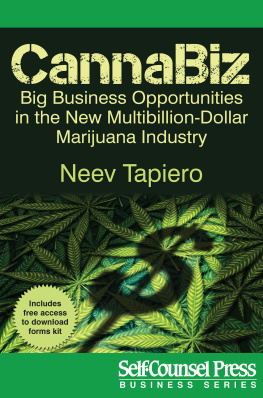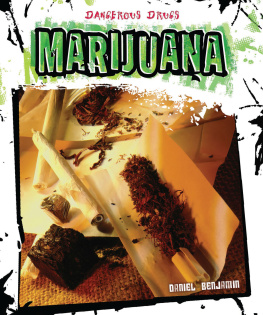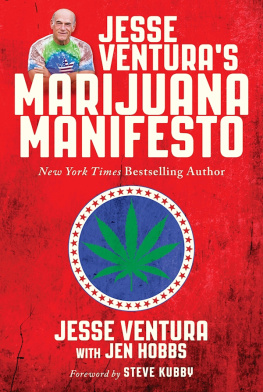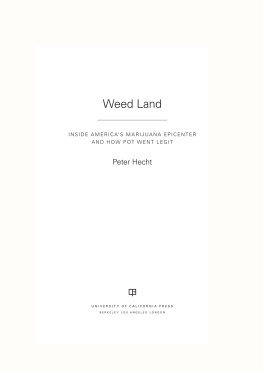For Alexander, Paul, Deanna and Christopher,
who always make me high

CONTENTS

INTRODUCTION
STEPHEN EASTON SAT in a small Spartan office behind a desktop cluttered with computer printouts detailing his latest calculations. A senior scholar at Canadas conservative thinktank, the Fraser Institute, and an economics professor at Simon Fraser University, Easton was astonished by the numbers his formula spat out. If they were correct, marijuana was Canadas most valuable agricultural product. Forget iconic wheatgolden shimmering symbol of the countrys farming heartland. Stinky, lime-green pot contributed more to the economy. Much, much more.
Over the last three or four years, I think most people now would say my estimates are low, he laughed. Especially the police.
By 2000, Easton figured, Canadian cannabis consumers annually spent at least $1.8 billion on bud. Thats almost as much as Canadians spent on tobacco$2.3 billion. And it meant consumption in the previous decade had doubled. Easton also believed exports to the United States dwarfed those figures.
The latest figures are as staggering. Pot production in B.C., which grows the lions share of the countrys crop, has more than tripled during the past seven yearsfrom an estimated 19,727 kilograms in 1997 to 79,817 kilograms in 2003. In Ontario and Quebec, the growth in hydroponic production has been exponential. Growing pot indoors has become uncomplicated and highly profitablein just three months, a closet, a basement, a bedroom, a barn or a bathroom anywhere can produce a down payment on a house. In most cities, towns, villages and rural areas across the continent, someone is doing it. The same is true in Europe. Hydroponic sales in sunny Spain are skyrocketingand the growers are not producing heirloom tomatoes.
Easton estimated that based on the most recently available 2003 figures, wholesale marijuana was worth about $2.2 billion to the B.C. economy$7.7 billion retail if consumers paid top dollar. Thats larger than the provinces legitimate agricultural sector. Across the country, he estimated that the industry was worth $5.7 billion wholesale and $19.5 billion if high-end retail pricing is assumed. Thats about the size of the Canadian cattle industry ($5.2 billion).
The dollar figures would be much higher had there not been economic factors during this period such as a low U.S. dollar and the fall of the wholesale marijuana price in the face of a glut market, Easton said. But heres the kickerlooking at the most recent numbers, the police are clearly changing their behaviour in that they are not responding to as many calls as they did before. The police have obviously reached an accommodation in their own mind. And they have prioritized in a way that is very unfair.
Last year, more than 25,000 growing operations across British Columbia came to the attention of police, but they investigated fewer than 17,000 and only about half of those were prosecuted. More than half of the grow operations police raided over the past seven years resulted in seizures but no charges. Police are charging people in fewer and fewer cases and seem to be increasingly reluctant to act at all. The same is true elsewhere in Canada.
Prosecutors and the judiciary also look like they are throwing up their hands. Large numbers of marijuana cases are dealt with via stays of proceedings and conditional sentence-or probation-based plea bargains. Nearly half end in conditional sentences, up from roughly one in ten people receiving such a penalty in 1997. Only one in ten of the 3,364 convicted in 2003 were imprisoned and on average they were jailed for less than five months. Thats about half the ratio of those jailed in 1997. British Columbia is Canadas most lenient jurisdiction, but across the country the judiciary is vexed about the question of sentencing in marijuana cases.
Nationally, 225 offenders were imprisoned for cultivation at the end of 2000and on average such inmates spent less than a year in custody, or eighteen months if they were convicted for importing. Traffickers on average spend only two years inside.
One can see how you could easily slouch into legalization, Easton said. You just slump into it in some sense. That may ultimately be the most graceful way it could happen.
Consider that half of those convicted in British Columbia alone would have been jailed for five years or more under U.S. sentencing guidelines. Fully 77 per cent of those convicted would have served at least three months if caught in the United States.
But even in jurisdictions where tough sentences are meted out, marijuana cultivation is a fact of life. The law is no longer a risk to growers, it is an operating cost. Jail penalties be damned: consumers want to have good dope, and in most places the only way to do that is to grow your ownwhich has the benefit of allowing you to sell the excess to your friends and pocket the profit.
Its time to admit the cannabis prohibition is a failure. More and more, it is revealed as a public policy disaster, a crisis for our communities and local politicians, and a legal quagmire for police and judges. The damage prohibition causes is exacerbated by the violence endemic to the pernicious black market it spawns, eroding confidence in law enforcement and respect for the courts. Taxpayers must deal with the problems of the illicit pot industry but receive no benefit, and as long as its underground, we have no ability to regulate it or control the commerce.
Decriminalization, which is Ottawas strategy, is a halfway house that makes users feel more relaxed but does nothing to eliminate the underground market and its attendant horrors. Stiffer sentences and more jail time are not a realistic answer, though justice and public safety ministers from Ottawa, Washington and European capitals continue to insist on them. There are far too many people involved. We cannot build enough prisons and we cannot deal with the social fallout.
In 2003, police in B.C. investigated more than 15,000 individualsmainly men in their thirties. If we assume they got everyone involved in the one in ten grow operations the police claim to be bustinga generous assumptionthat means there could be as many as 150,000 people involved across the sprawling, sparsely populated province. Consider how many people that would be across the country, and at what scale. Consider a sampling of recent newspaper reports:
In Barrie, Ontario, a former Molson brewery was converted into the largest grow-op in Canadian historymore than 25,000 plants producing an estimated $100 million a year in revenue.
In Edmonton, police raided a warehouse, seizing 5,600 plants.
On Vancouver Island, police arrested two men and seized 6,700 plants.
In Halifax, police found 4,000 plants in coordinated raids on nineteen sites.
In Winnipeg, police busted the second-largest grow-op in the country10,000 plants worth some $11 milliononly a block from their HQ.
In Calgary, police seized $4 million worth from three-locations.
In St-Rmi-dAmherst, Quebec, police seized 12,000 plants.
Every day brings a new list of seizures. Every day. With the kind of profit pot promises, people are lining up to get into this game.













